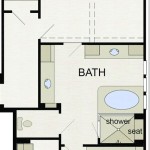Floor Lamp Dimmer Switch Replacement: A Comprehensive Guide
Floor lamps provide ambient and task lighting, enhancing the functionality and aesthetics of residential and commercial spaces. A common feature of many floor lamps is a dimmer switch, which allows adjustment of the light intensity to create a desired atmosphere. Over time, dimmer switches can malfunction due to regular usage, power surges, or component degradation. Replacing a faulty dimmer switch is a common repair that can be undertaken with basic electrical knowledge and appropriate tools. This article provides a comprehensive guide to floor lamp dimmer switch replacement, emphasizing safety protocols, step-by-step instructions, and troubleshooting tips.
Prioritizing Safety: Essential Precautions Before Beginning
Before initiating any electrical repair, safety must be the foremost consideration. Neglecting safety protocols can lead to electric shock, burns, or even more serious injuries. The following precautions are essential:
Disconnecting Power: The first and most critical step is to disconnect the floor lamp from the power source. This involves unplugging the lamp from the electrical outlet. Do not proceed with any further steps until the lamp is unplugged. A false sense of security can arise if the lamp is switched off but still connected to the outlet.
Verifying Disconnection: Use a non-contact voltage tester to verify that the lamp is indeed disconnected from the power supply. Place the tester near the lamp's wiring and switch components. If the tester indicates the presence of voltage, recheck the outlet and ensure it is not controlled by a wall switch or another power source. Voltage testers are inexpensive and readily available at hardware stores, and they provide an added layer of safety.
Insulated Tools: Employ tools with insulated handles. This includes screwdrivers, pliers, and wire strippers. Insulation provides a barrier against electric shock if contact is made with live wires. Inspect tools for any damage to the insulation, such as cracks or tears, and replace them if necessary.
Working in a Dry Environment: Ensure the work area is dry and free from moisture. Water is an excellent conductor of electricity and significantly increases the risk of electric shock. If the floor is damp, use a rubber mat to insulate yourself from the ground.
Identifying the Correct Replacement Dimmer Switch
Selecting the correct replacement dimmer switch is crucial for ensuring proper functionality and compatibility with the floor lamp. Several factors need to be considered:
Switch Type: Dimmer switches are available in various types, including rotary, slide, and touch-sensitive models. Determine the type of switch being replaced. Rotary dimmers typically use a knob to adjust the light intensity, while slide dimmers use a slider. Touch-sensitive dimmers respond to touch input. Ensure the replacement switch is of the same type or a compatible alternative. LED compatible dimmers may also be necessary depending on the type of bulb.
Voltage and Wattage Rating: The dimmer switch must be rated for the voltage and wattage of the floor lamp. Most residential floor lamps operate on 120 volts. Check the lamp's wattage rating, which is usually indicated on a label near the bulb socket. Select a dimmer switch with a wattage rating that meets or exceeds the lamp's wattage. Using a dimmer switch with an insufficient wattage rating can lead to overheating and premature failure.
Wiring Configuration: Examine the wiring configuration of the existing dimmer switch. Note the number of wires and their connections. Most dimmer switches have two or three wires. The wires are typically color-coded, with black for the hot wire, white for the neutral wire, and green or bare copper for the ground wire. The replacement switch should have a compatible wiring configuration.
Physical Size and Shape: Consider the physical size and shape of the dimmer switch. The replacement switch must fit within the lamp's housing and be compatible with the mounting mechanism. Measure the dimensions of the existing switch and compare them to the specifications of the replacement switch. Ensure the switch knob or slider is compatible with the lamp's control access point.
Step-by-Step Instructions for Dimmer Switch Replacement
With safety precautions in place and the correct replacement dimmer switch selected, the following steps outline the replacement process:
Accessing the Dimmer Switch: The method for accessing the dimmer switch varies depending on the lamp's design. Some lamps have a removable cover or panel that exposes the switch, while others require disassembling part of the lamp's structure. Consult the lamp's manual or visually inspect the lamp to determine the access method. Typically, screws or clips secure the cover or panel. Carefully remove these fasteners and detach the cover.
Disconnecting the Old Dimmer Switch: Once the dimmer switch is accessible, disconnect the wires. Use a screwdriver to loosen the screws that secure the wires to the switch terminals. Note the position of each wire before disconnecting it. Taking a photograph of the wiring configuration can be helpful for reference during reassembly. Once the screws are loosened, gently pull the wires from the terminals. If the wires are soldered to the switch, use a soldering iron to melt the solder and detach the wires.
Connecting the New Dimmer Switch: Connect the wires to the terminals of the new dimmer switch, matching the wiring configuration of the old switch. The wiring diagram included with the new dimmer switch can be used as a guide. Use a screwdriver to tighten the screws that secure the wires to the terminals. Ensure the connections are tight and secure. If the wires were soldered to the old switch, solder them to the corresponding terminals of the new switch. Use rosin-core solder and apply heat until the solder flows smoothly. Avoid using acid-core solder, as it can corrode the wiring.
Securing the Dimmer Switch: Position the new dimmer switch within the lamp's housing and secure it using screws or clips. Ensure the switch is properly aligned and that the knob or slider is accessible. Tighten the fasteners securely, but avoid over-tightening, which can damage the switch or the housing.
Reassembling the Lamp: Replace the cover or panel that was removed to access the dimmer switch. Secure it using screws or clips. Ensure the cover or panel is properly aligned and that all fasteners are tightened. Inspect the entire lamp for any loose parts or misalignments. If any issues are identified, correct them before proceeding.
Testing the New Dimmer Switch: Plug the lamp into the electrical outlet and test the new dimmer switch. Turn on the lamp and adjust the dimmer to different intensity levels. Verify that the light output changes smoothly and that the switch functions correctly. If the lamp does not turn on or the dimmer switch does not function properly, disconnect the lamp from the outlet and recheck the wiring connections. Ensure all wires are securely connected and that the correct wiring configuration is used.
Troubleshooting Common Dimmer Switch Problems
Even with careful installation, issues can sometimes arise. The following troubleshooting tips address common dimmer switch problems:
Lamp Does Not Turn On:
If the lamp does not turn on after replacing the dimmer switch, the first step is to verify that the bulb is functional. Replace the bulb with a new one to rule out a faulty bulb. If the bulb is not the issue, check the wiring connections of the dimmer switch. Ensure all wires are securely connected to the terminals and that the correct wiring configuration is used. A loose connection can prevent the flow of electricity to the lamp. Also, check the circuit breaker or fuse that supplies power to the outlet. A tripped breaker or blown fuse can prevent the lamp from turning on. Reset the breaker or replace the fuse if necessary.
Dimmer Switch Does Not Dim:
If the dimmer switch does not dim the light output, the problem may be related to the type of bulb being used. Some types of bulbs, such as LED bulbs, may not be compatible with all dimmer switches. Ensure the dimmer switch is compatible with the type of bulb being used. An LED compatible dimmer may be required. If the bulb is compatible, check the dimmer switch's wattage rating. A dimmer switch with an insufficient wattage rating may not be able to dim the light output effectively. Replace the dimmer switch with one that has a higher wattage rating. Also, check the dimmer switch's wiring connections. A loose connection can prevent the dimmer switch from functioning properly.
Dimmer Switch Overheats:
If the dimmer switch overheats during use, it may be due to an overload. Ensure the dimmer switch's wattage rating meets or exceeds the lamp's wattage. If the dimmer switch is rated for a lower wattage than the lamp, it can overheat. Replace the dimmer switch with one that has a higher wattage rating. Also, check the lamp's wiring for any shorts or loose connections. A short circuit can cause the dimmer switch to overheat. Repair any shorts or loose connections. If the overheating persists, the dimmer switch may be faulty and need to be replaced.
Flickering Lights:
Flickering lights can be caused by several factors. One possibility is a loose wiring connection. Check all wiring connections in the lamp, including those at the dimmer switch, bulb socket, and power cord. Tighten any loose connections. Another possibility is a faulty bulb. Replace the bulb with a new one to rule out a faulty bulb. If the flickering continues, the dimmer switch may be incompatible with the type of bulb being used. Ensure the dimmer switch is compatible with the type of bulb being used, especially if using LEDs. Finally, flickering can sometimes be a sign of a larger electrical problem, such as voltage fluctuations. In such cases, consult a qualified electrician.

Solved Dimmer Switch Replacement Part 1 For 6 Floor Lamp A 15 20 Min Repair Diy Howto

Solved Dimmer Switch Replacement Part 2 For 6 Floor Lamp A 16 20 Min Repair Diy Howto

500w Pole Lamp Dimmer Control Floor Brightness Nostalgicbulbs Com

Floor Lamp Rotary Dimmer Switch Max 300w 120v Ac 220v Replacement Repair Kit Ebay

Ze 02 Floor Lamp Rotary Dimmer Switch 500w 120vac Part Replacement Kit Ebay

Pole Lamp Dimmer Switch 500 Watt Nostalgicbulbs Com

Plug In Foot Dimmer Max 300w 220 240v Ac Slide Switch With For Floor Lamp Light Made Com

Ze 02b Separate Dimmer Switch For Led Lights Zing Ear

Rotary Dimmer Lamp Switch Kit Halogen Incandescent Led 120 V 240 500 Watt Ebay

Westinghouse 7080100 Halogen Dimmer For Torchiere Lamps Lightingnbeyond Com







